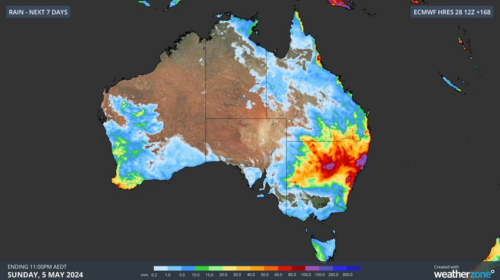Over the last fortnight, eastern Australia was hit by major a major rain and flooding event which stretched thick cloud across 1000 km of the eastern seaboard. The relentless cloud reduced solar output across NSW as the event unfolded.
The thick cloud cover and heavy rain during this fortnight was fueled by an atmospheric river feeding moisture-laden air into a series of slow-moving upper-level low pressure systems. This dynamic weather setup also featured several surface-based low-pressure troughs and East Coast Lows.
Sydney averaged just 3 hours and 15 minutes of sunshine per day during the fortnight leading up to Tuesday, March 8, well below the city’s average of 6.5 hours per day. This is the cloudiest fortnight Sydney has seen in more than 20 years.
During this period, the city saw four days without any sunshine at all as thick clouds plagued the city.
Solar generation impacted by cloud cover
February and March’s prolific cloud cover reduced solar generation across eastern NSW for a number of days during this event.
The maps below from Weatherzone’s partner, Solcast, show how thick cloud cover reduced solar irradiance on March 2 and March 6.
Image: Solcast’s Solar irradiance data for Australia on Wednesday, March 2 (top) and Sunday, March 6 (bottom), showing thick cloud impacting eastern Australia.
Data from OpenNEM reveals a significant drop in solar output during the last week of February into the first week of March in NSW. There was also a noticeable impact on solar output in SA and VIC last month.
The graphs below show daily solar generation (rooftop and utility combined) during the last 30 days for NSW.
Image: Daily solar generation (rooftop and utility combined) during the last 30 days for NSW. Rooftop is lighter yellow and utility is darker yellow. Source: OpenNEM.
Solar power is becoming increasingly important in the Australian energy markets; however, the variable nature of solar generation poses significant challenges for integration into the electricity industry.
Weatherzone, in partnership with Solcast, provides solar power forecasting and solar irradiance data, for both large-scale solar farms and small-scale PV systems, plus their grid or regional aggregates. For more information, please contact us at business@weatherzone.com.au.









